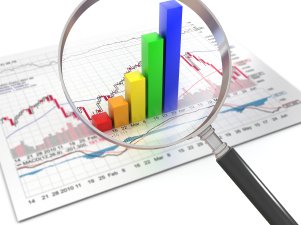Analytics is a great topic that concerns me a lot. Think of social media analytics, multichannel marketing analytics for the purpose of driving insights and create data-driven decision-making processes. The eighth employee of SAP BusinessObjects, Timo Elliot wrote a great blog on the ten trends in business intelligence and analytics.
According to Timo Elliot the 10 analytics trends are:
1. Analytics And Business Intelligence Are Still #1
According to Gartner’s latest CIO survey, the top business priority is back to enterprise growth, and analytics and business intelligence remains the number one technology priority for 2013.
2. Increasing Analytic Maturity
Thanks to greater industry maturity and new technology opportunities, most organizations are making steps from Descriptive Analytics (“what happened?”) and Diagnostic Analytics (“why did it happen?”) towards Predictive Analytics (“what will happen”) – with Prescriptive Analytics (“how can we make it happen”) as the next frontier.
3. In-Memory is Ripping Up The Old Rules
In-memory computing is providing an opportunity to rethink information systems from scratch. According to Gartner, in-memory: “isn’t only about SAP HANA, isn’t new, isn’t unproven, isn’t only about big companies, and isn’t only about analytics”:
4. Breaking Down Old Barriers
In-memory breaks down long-standing analytics barriers. For example, in-memory computing platform SAP HANA supports structured and unstructured data in a single system, and includes a sophisticated, embedded text analysis engine. sets to the corporate hub for analysis.
5. Operations and Analytics Are No Longer Separate
For forty years, operational systems and analytic systems have been separate because of technology limitations. That’s now changing with in-memory platforms.
6. Big Data is a Big Deal
In addition to traditional “transaction data”, it’s now feasible to analyze “interaction data” (events before, after, and around a transaction, such as the products that were considered but then not purchased) and “observation data” (such as data streamed from sensors).
7. Analytics Moves To The Core
Analytics is no longer an afterthought to your transaction systems — it’s the heart of your future information infrastructure. The data you are storing now you will still have in 15 or 20 years time, while your applications may be long gone.
8. Optimizing the User Experience
Today’s information consumers demand the same ease-of-use and immediate access they get in the consumer world. Business people want to be able to grab and mix information on the fly, without having to wait for it to be loaded into a corporate data warehouse.
9. Information as an Asset
Along with all the technology changes, there have been big changes to analytics culture. Information is no longer a byproduct of manufacturing processes – it is fast-becoming a key part of the products themselves.
10. The Revenge of Information Governance
As the technology gets more and more powerful, it becomes even more important to fix one of the oldest and least tractable barriers to successful BI: the pain of integrating multiple sets of quality data.
To read the full elaborations, go here.
An Accenture study of senior analytics practitioners in the U.S. and the U.K. reveals that businesses are at very different stages on their journey to ROI driven by analytics, the focus of their analytics are:
- Customer acquisition and retention
- NPD
- Customer experience
With Elliot’s eighth point that the user (customer) experience is key. If we follow Joe Pine’s economic value creation, the experience comes after the product and service as opportunity. (Digital) personalized experiences have much potential.
Gianluigi Cuccureddu is co-founder of Damarque, helping you to improve your commercial performance through better engagement with your employees, customers and strategic business partners.
We offer high-impact training, coaching and consulting services for professionals, teams and organizations to help improve people ánd organizational performance and innovation capability in an efficient and sustainable way.












